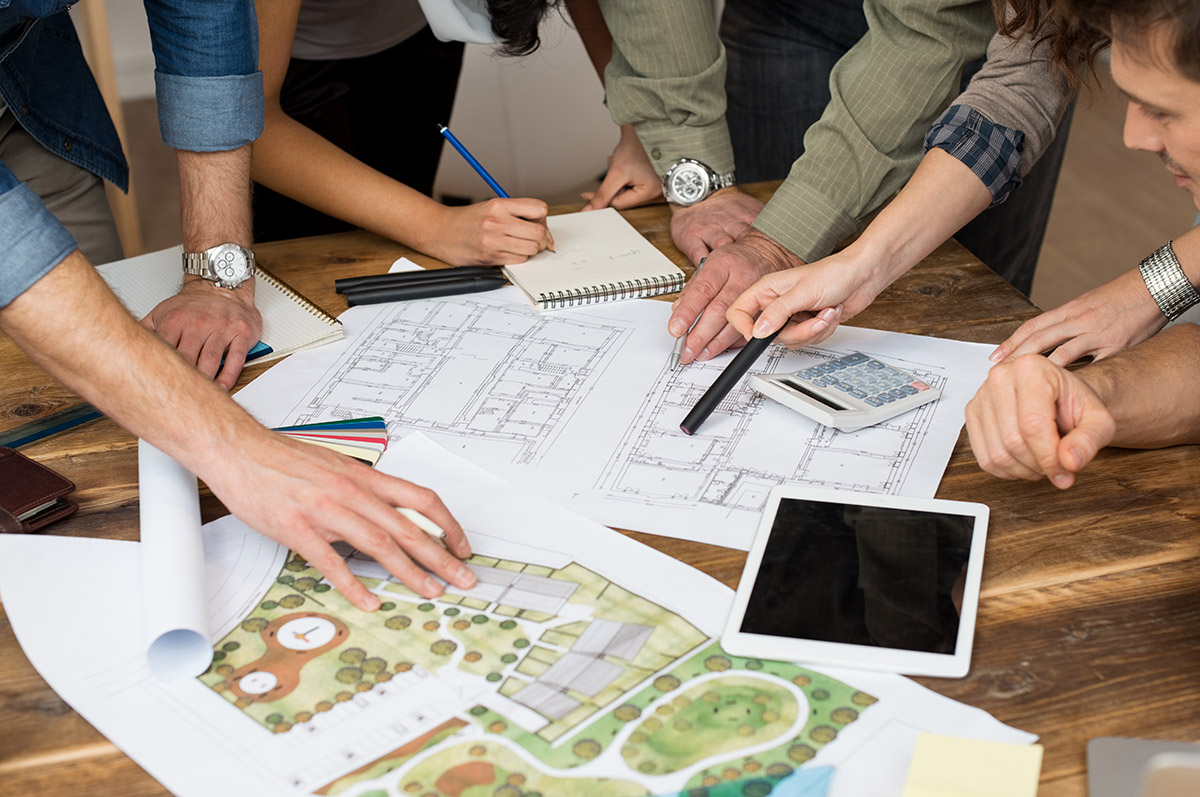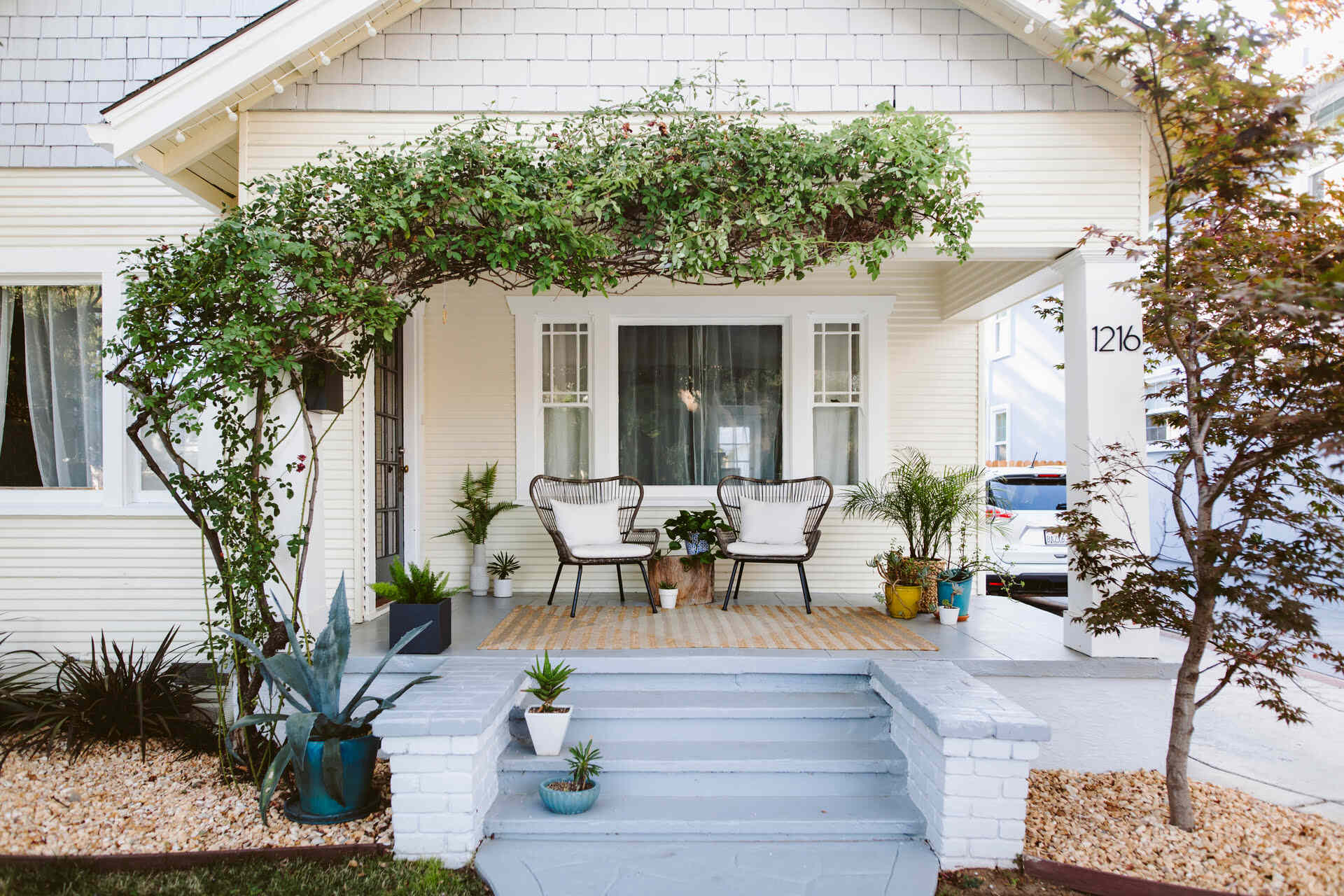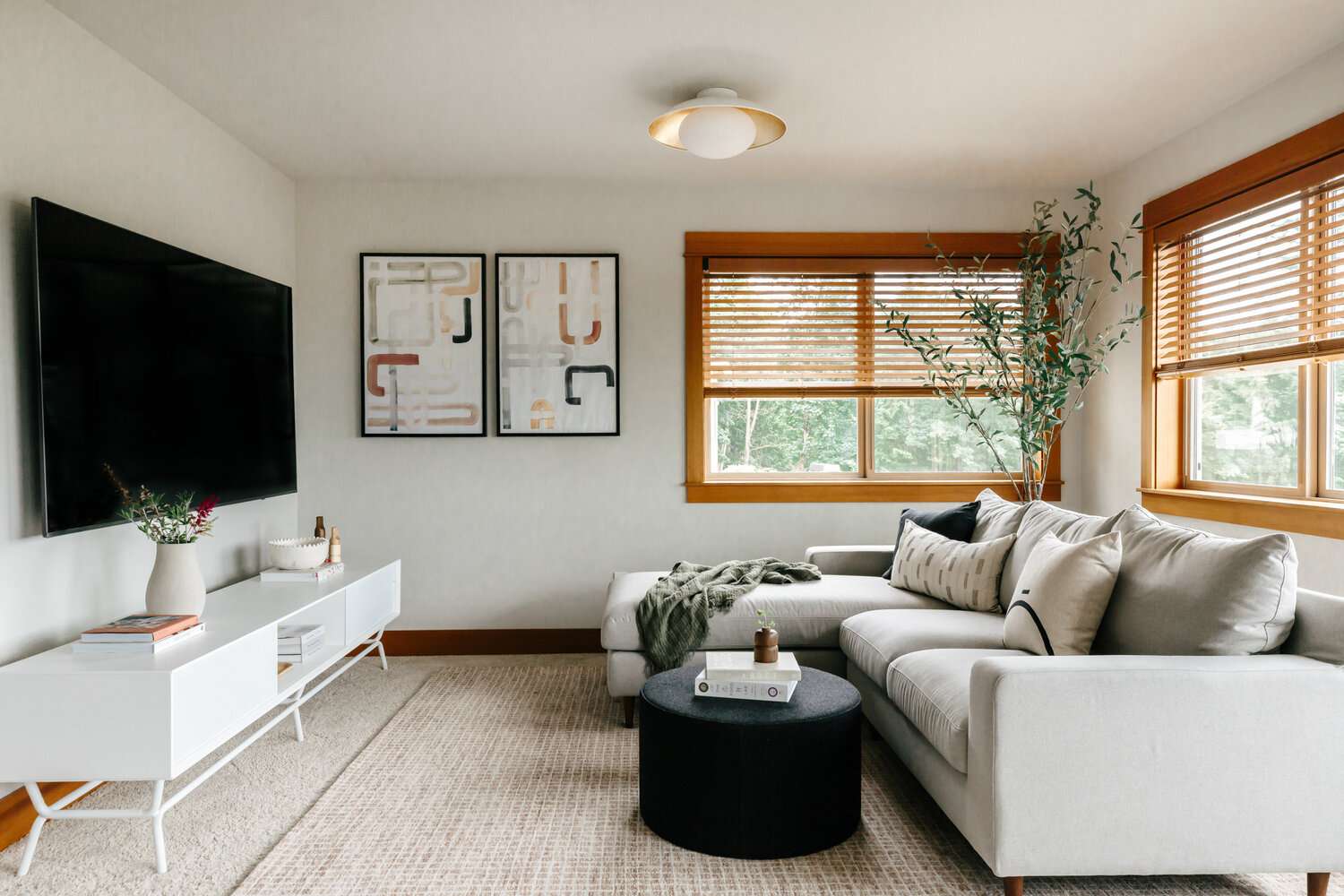Home>Garden Essentials>What Is The Difference Between Landscape Design And Architecture


Garden Essentials
What Is The Difference Between Landscape Design And Architecture
Modified: October 20, 2024
Learn about the distinction between landscape design and architecture, and how they relate to creating stunning garden spaces. Gain insights on garden planning and architectural elements.
(Many of the links in this article redirect to a specific reviewed product. Your purchase of these products through affiliate links helps to generate commission for Storables.com, at no extra cost. Learn more)
Introduction
Welcome to the world where creativity meets functionality – the realm of landscape design and architecture. These two closely related disciplines play a crucial role in shaping the built environment and creating harmonious spaces for people to live, work, and connect with nature.
Landscape design is the art and science of transforming outdoor areas, including gardens, parks, and public spaces, into beautiful and functional landscapes. On the other hand, architecture is the practice of designing and constructing buildings, encompassing everything from residential homes to commercial structures.
While landscape design and architecture share similarities in terms of design principles and elements, they also have distinct differences that set them apart. Understanding these differences is essential for anyone interested in this field, whether you’re a homeowner, aspiring designer, or simply a lover of beautiful spaces.
In this article, we will explore the key similarities and differences between landscape design and architecture, their importance in the built environment, and how they collaborate to create breathtaking spaces.
Key Takeaways:
- Landscape design focuses on creating beautiful and functional outdoor spaces, while architecture deals with designing and constructing buildings. Both collaborate to make our world more inspiring and livable.
- Landscape designers and architects work together to blend nature with the built environment, creating spaces that are visually appealing, practical, and environmentally sustainable. Their collaboration enhances human well-being and connection with the natural world.
Definition of Landscape Design
Landscape design is the art and science of planning, creating, and managing outdoor spaces, with the goal of enhancing their aesthetic appeal, functionality, and sustainability. It involves a careful consideration of various elements, including plants, hardscape features, water elements, and lighting, to achieve a harmonious and visually pleasing environment.
A landscape designer is tasked with analyzing the site, understanding its natural characteristics, and integrating them with human needs and desires. This involves studying the topography, climate, soil conditions, and available resources to design a landscape that is both beautiful and practical.
One of the key objectives of landscape design is to establish a connection between people and nature. It aims to create spaces that provide a sense of tranquility, solace, and rejuvenation, while also considering factors such as accessibility, safety, and ecological sustainability. Landscape designers carefully select and arrange plants, trees, shrubs, and flowers to create visually appealing and environmentally responsible landscapes.
In addition to the aesthetic aspects, landscape design also addresses practical considerations such as drainage, irrigation, and erosion control. Designers take into account the movement of water on the site, incorporate sustainable irrigation systems, and use techniques such as terracing and contouring to manage runoff and prevent soil erosion.
Overall, landscape design is a multidisciplinary field that combines elements of art, engineering, horticulture, and ecology. It requires a deep understanding of the natural environment, attention to detail, and a creative vision to transform outdoor areas into inviting and functional landscapes.
Definition of Architecture
Architecture is the art and science of designing and constructing buildings and other physical structures. It encompasses the process of creating functional, safe, and aesthetically pleasing spaces that meet the needs of the people who use them. Architects are responsible for conceptualizing, planning, and overseeing the construction of both residential and commercial structures.
At its core, architecture is about creating spaces that are not only structurally sound but also responsive to the environment and the needs of their occupants. Architects consider factors such as site conditions, climate, cultural context, and user requirements to design buildings that are both functional and visually striking.
Architectural design involves a meticulous process of analyzing the site, developing conceptual ideas, and translating them into detailed designs. Architects use a combination of artistic vision, technical expertise, and knowledge of materials and construction techniques to produce innovative and sustainable structures.
Architectural design also goes beyond the mere appearance of buildings. It encompasses aspects such as spatial organization, circulation, lighting, acoustics, and energy efficiency. Architects strive to create spaces that promote well-being, inspire creativity, and foster a sense of community.
Furthermore, architecture plays a significant role in shaping the urban environment. Architects are often involved in urban planning and designing public spaces, such as parks, plazas, and transportation hubs. They consider how buildings interact with their surroundings and strive to create a cohesive and visually appealing built environment.
Overall, architecture is a complex and multifaceted discipline that requires a blend of technical expertise, artistic vision, and a deep understanding of human needs. It aims to create buildings and spaces that not only fulfill their functional requirements but also inspire and elevate the human spirit.
Key Similarities between Landscape Design and Architecture
Landscape design and architecture share many similarities as they both involve creating and manipulating spaces to serve specific purposes. Here are some of the key similarities between these two disciplines:
- Creative Design: Both landscape design and architecture involve the use of creativity and artistic expression to design visually appealing spaces. Designers and architects carefully consider aesthetics, proportions, and the overall composition of elements to create cohesive and harmonious designs.
- Functional Considerations: Both disciplines prioritize functionality and practicality. Landscape designers and architects need to understand the needs of the users and create spaces that cater to those requirements. Whether it’s a building or a garden, the layout and arrangement of elements should facilitate smooth movement and efficient use of space.
- Collaboration with Nature: Both landscape design and architecture aim to create spaces that integrate with the natural environment. Designers in both disciplines consider the site’s characteristics, such as topography, climate, and vegetation, to create designs that are sustainable and ecologically responsible.
- Utilization of Design Principles: Design principles such as balance, proportion, rhythm, and harmony are essential in both landscape design and architecture. Whether it’s the arrangement of plants in a garden or the proportions of a building facade, these principles guide the design process and contribute to creating visually appealing and functional spaces.
- Attention to Details: Both landscape designers and architects pay close attention to details. They consider the materials, textures, colors, and lighting to enhance the overall design. From the selection of plants and construction materials to the placement of windows and doors, every detail is carefully considered to achieve a cohesive and polished design.
These similarities demonstrate the overlap between landscape design and architecture in terms of their creative processes and the considerations they take into account. While they have distinct focuses, they both contribute to the creation of inspiring and livable spaces.
Key Differences between Landscape Design and Architecture
While landscape design and architecture share commonalities, they also have distinct differences that set them apart. Understanding these differences is crucial for grasping the unique contributions each discipline makes to the built environment. Here are some key differences between landscape design and architecture:
- Scale and Scope: One of the primary differences lies in the scale and scope of the projects. Architecture primarily deals with designing and constructing buildings, ranging from small residences to towering skyscrapers. Landscape design, on the other hand, focuses on the design and planning of outdoor spaces, including gardens, parks, and public areas.
- Elements of Design: While both disciplines focus on the aesthetic aspects, the elements they deal with differ. Architecture primarily deals with the design of the building itself, including its structure, materials, interior spaces, and external facade. Landscape design, on the other hand, focuses on the arrangement and selection of plants, hardscape elements (such as pathways and patios), water features, and lighting to create outdoor environments.
- Functional Considerations: While functionality is important in both disciplines, the specific considerations differ. Architects focus on creating spaces that meet the needs of the occupants, such as providing habitable living areas, efficient circulation, and proper ventilation. Landscape designers, on the other hand, consider factors like access and movement within the landscape, drainage, and irrigation to ensure the outdoor space is usable and sustainable.
- Regulatory Codes: In architecture, there are strict building codes and regulations that architects must adhere to. These codes dictate aspects like safety, accessibility, and structural integrity. Landscape design, though subject to some regulations, generally has less stringent codes than architecture. However, landscape designers still need to consider any local regulations related to plant species, water usage, and environmental impact.
- Construction Processes: The construction processes for architecture and landscape design also vary. Buildings constructed by architects involve complex structural elements, mechanical systems, and interior finishes. Landscape design typically involves less extensive construction, focusing more on the installation of plants, hardscape features, and irrigation systems.
These differences highlight the unique contributions and focuses of landscape design and architecture. While architecture creates habitable spaces, landscape design enhances the outdoor environment and connects people with nature. Collaborating the two disciplines ensures a seamless integration between the built environment and the surrounding landscape.
Landscape design focuses on outdoor spaces, plants, and natural elements, while architecture deals with the design and construction of buildings. Understanding the difference can help you choose the right professional for your project.
Read more: What Is The Difference Between BIM And VDC?
Importance of Landscape Design in Architecture
Landscape design plays a crucial role in the field of architecture, enhancing the overall success and functionality of a project. Here are some key reasons why landscape design is important in the realm of architecture:
- Enhancing Aesthetic Appeal: Landscape design adds beauty and visual interest to architectural projects. Thoughtfully designed outdoor spaces can complement and enhance the aesthetic appeal of a building, creating a harmonious and inviting environment. By integrating natural elements and green spaces, landscape design can soften the built environment and create a more pleasing overall experience.
- Creating Human Connection: Well-designed landscapes can establish a deeper connection between people and their surroundings. They provide opportunities for relaxation, social interaction, and recreation. Incorporating outdoor spaces, such as gardens, courtyards, and terraces, can improve the quality of life for building occupants and create a sense of tranquility and well-being.
- Mitigating Environmental Impact: Landscape design can contribute to sustainable architectural practices. Through the careful selection of plants, efficient water management techniques, and implementation of green infrastructure, landscape design can help mitigate the environmental impact of a building. It can reduce stormwater runoff, improve air quality, and provide habitat for local wildlife.
- Improving Microclimate: Landscape design can significantly affect the microclimate around a building. By incorporating trees and vegetation strategically, it can provide shade, reduce heat island effect, and mitigate the impact of extreme temperatures. This not only improves the comfort of building occupants but also reduces the need for excessive energy consumption for cooling.
- Creating Functional Outdoor Spaces: Landscape design contributes to the creation of functional outdoor spaces that extend the usable area of a building. Outdoor amenities, such as seating areas, outdoor kitchens, and recreational spaces, can enhance the overall functionality and usability of a property. Landscaping can also be designed to provide privacy, screen unwanted views, or buffer noise from nearby areas.
By integrating landscape design into architectural projects, designers can create environments that are aesthetically pleasing, sustainable, and conducive to human well-being. The collaboration between landscape designers and architects ensures a seamless integration of indoor and outdoor spaces, resulting in a holistic and harmonious built environment that benefits both people and the planet.
Importance of Architecture in Landscape Design
Architecture plays a significant role in landscape design, providing a framework and context for the outdoor spaces. Here are some key reasons why architecture is important in landscape design:
- Defining the Built Environment: Architecture establishes the built environment within which landscape design takes place. The design of buildings, structures, and other built elements creates a backdrop against which the landscape is developed. The scale, style, and materials of the architecture set the tone for the overall design concept and help shape the character of the landscape.
- Integrating Indoor and Outdoor Spaces: Architects consider the relationship between indoor and outdoor spaces during the design process. By incorporating features like doors, windows, and outdoor access points, architecture creates seamless transitions between the built environment and the surrounding landscape. This integration allows for a cohesive and harmonious design, providing a sense of continuity and connection between indoor and outdoor areas.
- Guiding Site Planning: Architecture provides guidance for the layout and organization of outdoor spaces. The placement of buildings, pathways, and other elements helps inform the arrangement of gardens, patios, and outdoor amenities. The architectural framework guides the design of circulation patterns, zones of activity, and focal points within the landscape, ensuring a functional and well-planned outdoor environment.
- Providing Structural Support: Architecture provides structural support that can enhance the functionality and usability of the landscape. Features such as pergolas, covered walkways, and shelters offer protection from the elements, allowing outdoor spaces to be enjoyed in various weather conditions. Additionally, architectural elements like retaining walls and terraces provide structural stability and enable the creation of multi-level landscapes.
- Showcasing Views and Perspectives: The strategic positioning of buildings and architectural elements can showcase important views and perspectives within the landscape. Architecture acts like a frame, directing the viewer’s attention toward specific focal points, such as scenic vistas, water features, or focal plants. This thoughtful integration between architecture and landscape design enhances the overall visual experience and creates memorable moments within the outdoor space.
By considering architecture in landscape design, designers can create outdoor spaces that harmonize with the built environment, enhance access and circulation, and provide opportunities for visual engagement and enjoyment. The collaborative efforts between landscape designers and architects ensure a cohesive and integrated design solution that maximizes the potential of both disciplines.
Collaborative Efforts between Landscape Designers and Architects
The collaboration between landscape designers and architects is essential in creating cohesive and well-integrated designs. Working together, these professionals combine their expertise to develop spaces that harmonize with the natural environment while meeting the needs of the occupants. Here are some key collaborative efforts between landscape designers and architects:
- Site Analysis and Planning: Landscape designers and architects collaborate in conducting comprehensive site analysis to understand the characteristics of the project site. They consider factors such as topography, climate, vegetation, and existing structures to inform the design process. Through joint planning sessions, they determine how the architecture and landscape can be integrated to optimize the use of space and maximize the site’s potential.
- Design Integration: Landscape designers and architects work together to integrate outdoor and indoor spaces seamlessly. They consider the circulation patterns, views, and orientations to ensure that the architecture and landscape complement each other. By aligning design concepts and principles, they create a cohesive aesthetic and functional experience for both the interior and exterior environments.
- Holistic Design Approaches: Collaboration between landscape designers and architects allows for a holistic approach to design. They consider the overall site layout, the relationship between buildings and landscape elements, and the flow of movement throughout the entire space. By harmonizing the built environment with the outdoor landscape, they create a unified design that enhances the beauty and functionality of the space.
- Material and Plant Selection: Landscape designers and architects collaborate to select materials, finishes, and vegetation that complement each other and enhance the overall design aesthetic. They consider the durability and sustainability of materials, as well as the suitability of plant species to the local climate and site conditions. Coordination ensures that the materials and plants chosen work harmoniously together, resulting in a cohesive and integrated design.
- Construction Coordination: During the construction phase, landscape designers and architects work together to ensure the accurate implementation of the design. They collaborate with contractors and builders to oversee the construction of both the architectural and landscape elements. Regular communication and site visits help address any design challenges, ensuring that the final outcome aligns with the collaborative vision.
- Sustainability and Environmental Considerations: Collaboration between landscape designers and architects promotes sustainable design practices. They work together to incorporate green infrastructure, energy-efficient systems, and sustainable materials into the design. By considering environmental factors and implementing sustainable solutions, they create spaces that are not only visually appealing but also ecologically responsible.
The collaborative efforts between landscape designers and architects result in holistic designs that unite the built and natural environments. By combining their expertise, they create spaces that are aesthetically pleasing, functional, and sustainable, enriching the lives of those who inhabit and interact with them.
Conclusion
Landscape design and architecture are two intertwined disciplines that work hand in hand to shape the built environment. While each has its own focus and expertise, their collaboration is essential in creating cohesive and exceptional designs that inspire and enhance the human experience.
Through careful planning, creative design, and attention to detail, landscape designers and architects work together to create spaces that are aesthetically beautiful, functional, and environmentally sustainable. Landscape design adds a natural and harmonious element to architectural projects, integrating outdoor spaces with the built environment. At the same time, architecture provides a framework and context for landscape design, guiding the layout and organization of outdoor spaces.
The collaborative efforts between these disciplines result in designs that prioritize human well-being, connect people with nature, and improve the overall quality of life. Together, landscape designers and architects consider factors such as aesthetics, functionality, sustainability, and cultural context to create spaces that are not only visually pleasing but also practical and sensitive to their surroundings.
Furthermore, the collaboration between landscape designers and architects fosters innovation and creativity. By drawing on each other’s expertise and perspectives, they push the boundaries of design possibilities, finding innovative solutions to complex challenges and creating unique and inspiring spaces.
Whether it is an urban park, a residential garden, or a magnificent architectural masterpiece, the collaboration between landscape design and architecture is essential in creating environments that promote well-being, inspire creativity, and foster a deep connection with the natural world.
In conclusion, the harmonious relationship between landscape design and architecture is a testament to the power of collaboration in creating remarkable and transformative spaces. By embracing their similarities, appreciating their differences, and working together, landscape designers and architects contribute to the creation of a built environment that enhances the human experience and leaves a lasting impact.
Frequently Asked Questions about What Is The Difference Between Landscape Design And Architecture
Was this page helpful?
At Storables.com, we guarantee accurate and reliable information. Our content, validated by Expert Board Contributors, is crafted following stringent Editorial Policies. We're committed to providing you with well-researched, expert-backed insights for all your informational needs.















0 thoughts on “What Is The Difference Between Landscape Design And Architecture”